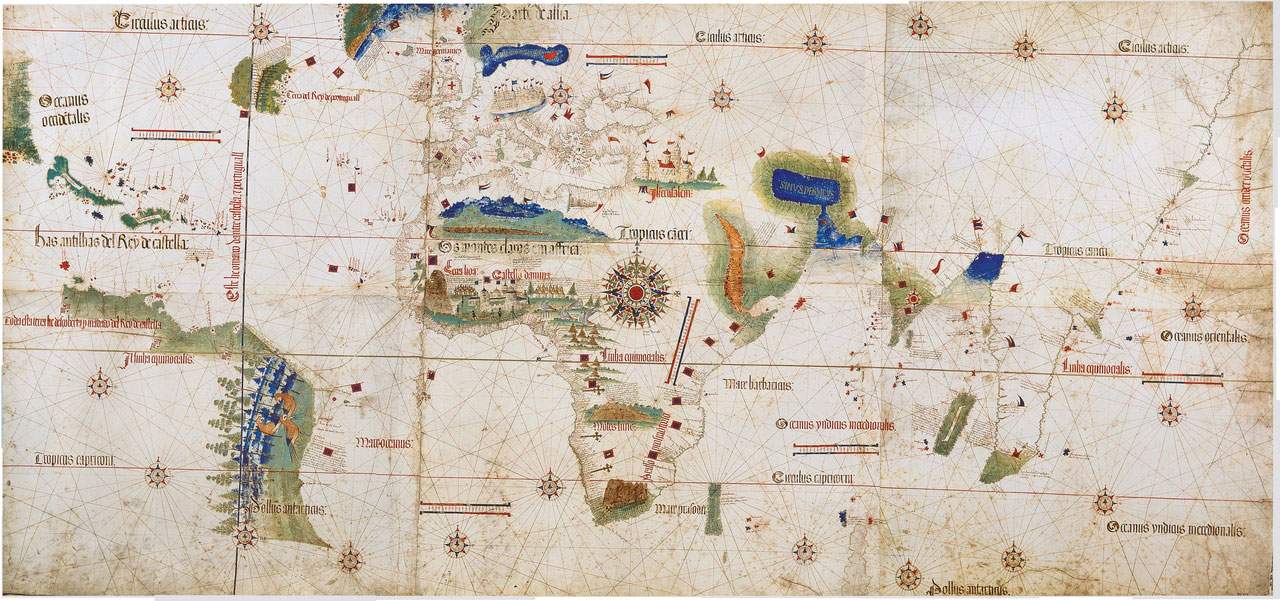Milan, Italy, found in 1340 manuscript a mention of America 150 years before Columbus
Sensational discovery by a working group at theState University of Milan led by Professor Paolo Chiesa, professor of Middle Latin and humanistic philology at the Lombard university. In fact, the research team found, for the first time in history, a mention of America in the Mediterranean area dating back to 150 before the “discovery” of Christopher Columbus. The mention of a land located across theAtlantic was noted in an unpublished medieval work, written by the Dominican Galvano Fiamma (Milan, 1283 - 1344) around 1340: the discovery came about as part of a teaching project at the State University of Milan, in which several Humanities students collaborated, and was published in the U.S. journal Terrae incognitae, dedicated to the history of exploration, in an article entitled Marckalada. The first mention of America in the Mediterranean Area, signed by Professor Chiesa.
The American continent, as is well known, entered the orbit of Europeans’ knowledge with the 1492 expedition of Christopher Columbus, but in fact explorations on the northern coasts of the Atlantic had already been carried out in previous centuries by Viking navigators, and left sporadic traces in the semi-legendary tales of some Norse sagas. News of the existence of lands beyond the Atlantic , however, had never been documented until now outside Scandinavia. Research at the State University, moreover still in progress, now shows that something was known even further south.
The mention comes from Milan itself: it is found in the Cronica universalis of the Dominican Galvano Fiamma, author of various chronicles written during the Visconti period. Within this work, still unpublished and the subject of study by the project, is a reference to a land named "Marckalada," certainly to be identified with that called Markland in the Norse sagas.
This is the Italian translation of Galvanus’ passage, originally written in Latin: “Sailors who sail the seas of Denmark and Norway say that beyond Norway, toward the north, lies Iceland. Farther on is an island called Grolandia...; and still further to the west is a land called Marckalada. The inhabitants of the place are giants: there are buildings of stones there that are so large that no man would be able to lay them, except great giants. Green trees grow there and lots of animals and birds live there. However, there has never been any sailor who has been able to know with certainty news about this land and its features.” It is likely that the news had reached Galvanus from Genoa, a city with which the writer had contacts, and that the sailors mentioned are Genoese sailors who traded with northern regions. The interest of the discovery lies in the fact that it reopens a question long debated but on which there was no documentation: whether information about the existence of transatlantic lands circulated in Genoa before Columbus, and whether any news, even vague, of their existence had made the risk of the 1492 expedition more acceptable.
“The mention of America,” explains Paolo Chiesa, “is just one of the surprises that Galvanus Flame’s Cronica universalis holds, although it is probably the most resounding. It is an unpublished work, on which we built a teaching project in which several students collaborated with their theses, sharing the transcription of the manuscript and the clean rendering of the text. The students have learned a lot from this experience, and they now also have the satisfaction of seeing that their work has an amazing scientific outcome.”
The part of the manuscript containing the mention of America was transcribed by Giulia Greco, now a Ph.D. student at the University of Trent, who recounts, “The manuscript is penned in a northern Italian Gothic script, which is not always easy to decipher. In addition to transcribing their assigned part of the text, each student had to identify the sources Galvanus employed for the news contained therein. For the phrase ’American,’ in particular, no bookish sources were identified, and one must therefore believe Galvanus when he says he was reporting oral information.”
The next stage of the research is the publication of the entire Cronica universalis. This part of the work is coordinated by Federica Favero, research fellow, who describes it as follows, “The manuscript of the work is in the United States, and it is privately owned. It was therefore necessary to go to the site: the owner authorized us to photograph the entire codex, and we worked on the basis of these photographs. It is now a matter of standardizing the transcriptions produced by the theses to a scholarly editorial standard, of delving into the remaining obscure points, and of accompanying the text with the necessary commentary; when this is done, the Cronica universalis will be available to all, as it deserves to be.”
Image: Unknown author, Cantino Planisphere (1502; six sheets of glued parchment, 1050 x 2200 mm; Modena, Biblioteca Estense)
 |
| Milan, Italy, found in 1340 manuscript a mention of America 150 years before Columbus |
Warning: the translation into English of the original Italian article was created using automatic tools. We undertake to review all articles, but we do not guarantee the total absence of inaccuracies in the translation due to the program. You can find the original by clicking on the ITA button. If you find any mistake,please contact us.





























